This project is based on material aggregation method under a fluid milieu. The aim is to generate an algorithm that will ultimately surface a climatic matter.
To begin with the process the material selected for the experiments is Gypsum Lump. Gypsum has this mouldable and hardens inside water. It is widely used in construction field but mostly for smoothing and filling the surfaces.
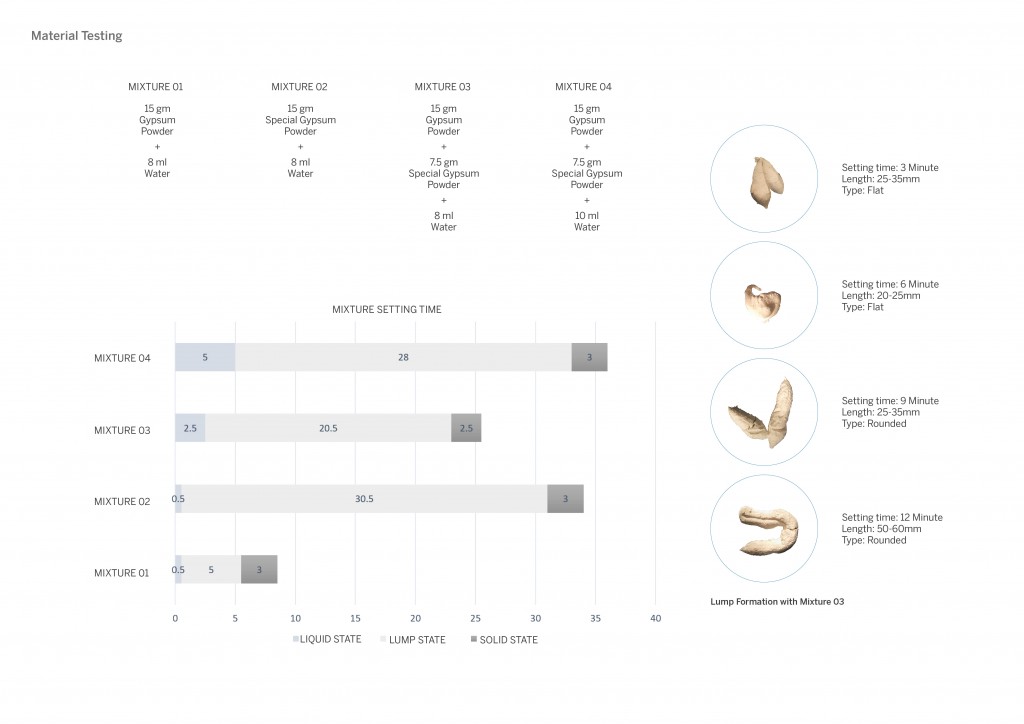
The paste is then make to pass through different mould geometries with increasing axis in uni direction and then with addition no of axis.
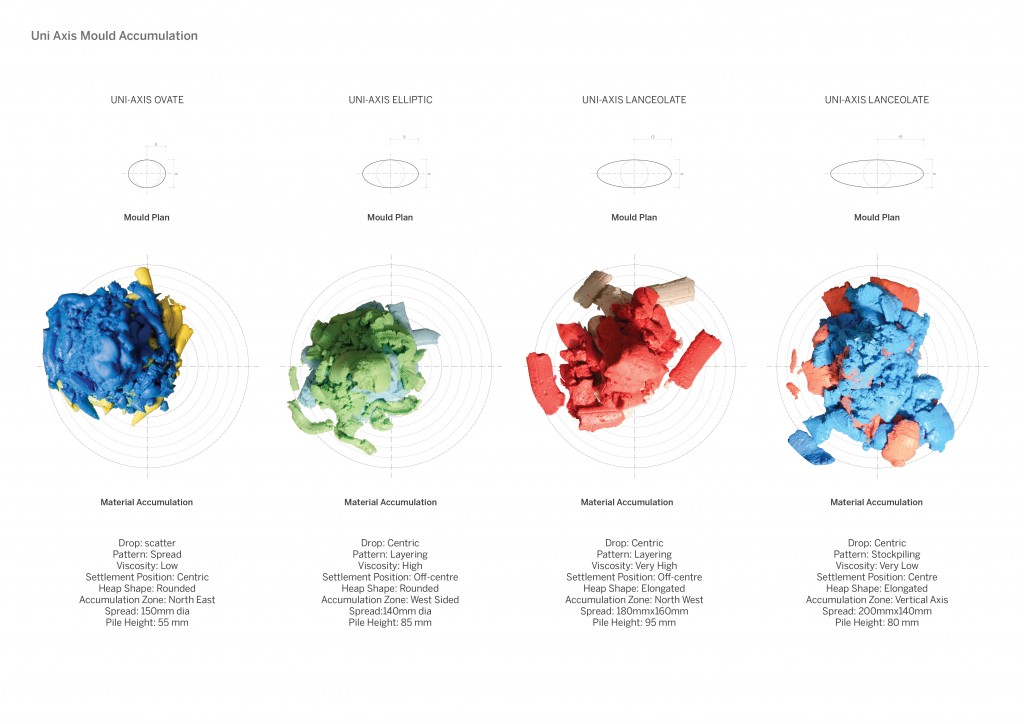
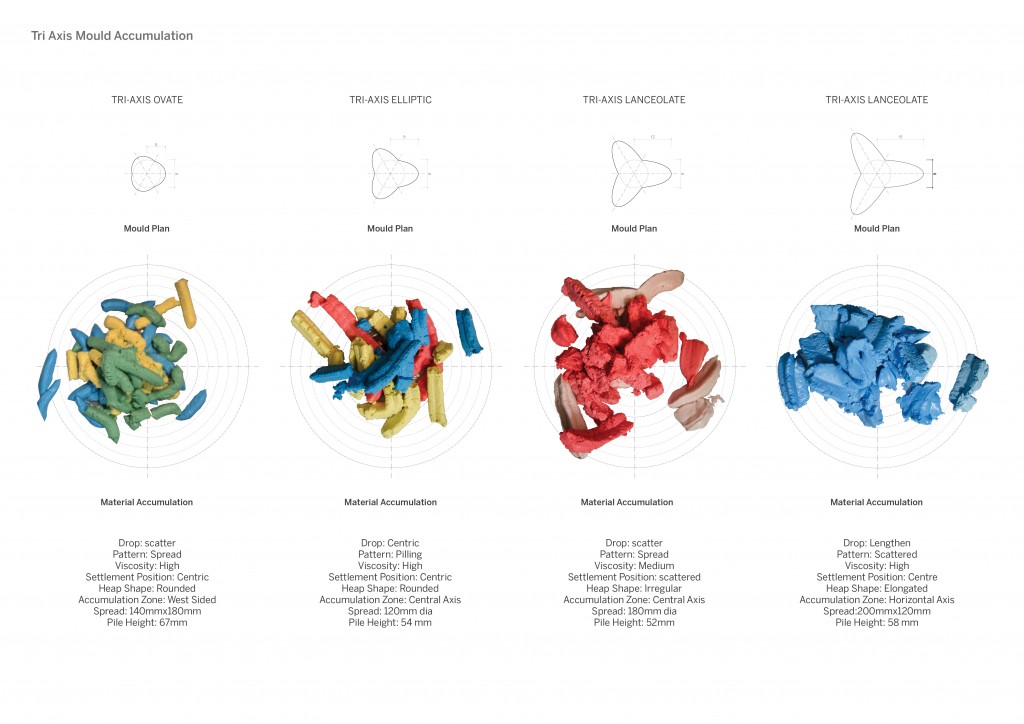
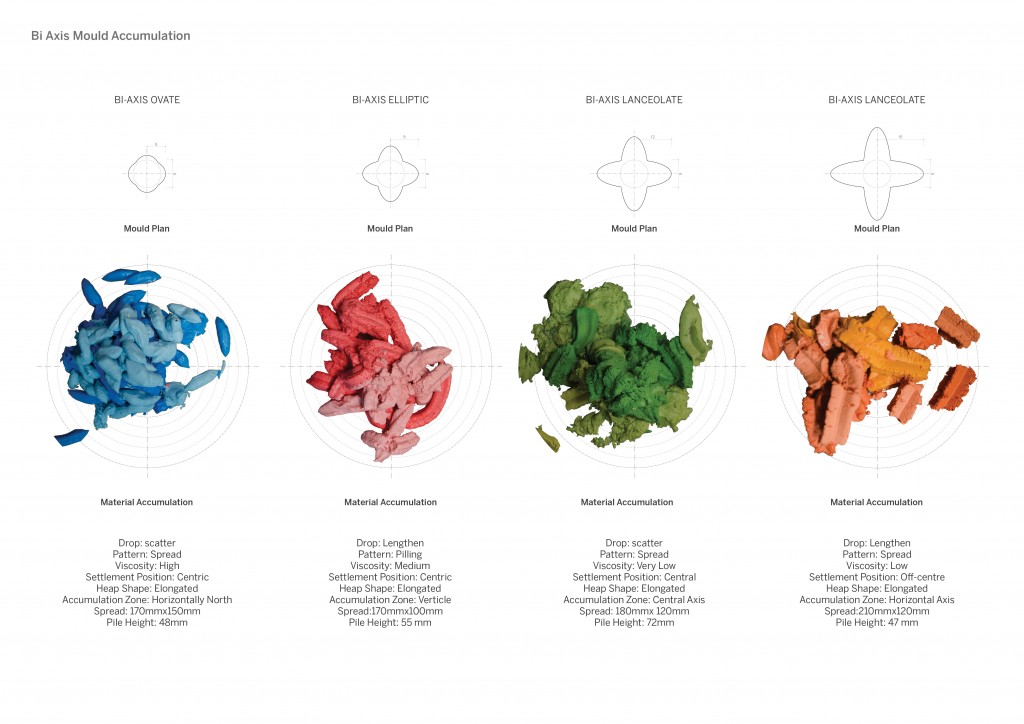
In Uni Axis test its been observed that when the weight of a drop is less the drag is high so the deposition is mostly scattered and the mould size increased which led to Increase in the weight when it hits the water its forms a thin air layer around it which is one of the way to decrease the drag phenomena so the accumulation is more centric. the scattered formed around it is due to its crash on already accumulated material.
While In Tri Axis, the extra fins helps to increase the drag so with the heavier lump also the accumulation is more scattered.
Whereas in Bi Axis with addition of one more fins we can get more scattered geometries.
By doing all these experiment, one can control the scatted part and make it more pile formation or vice versa on this basis.
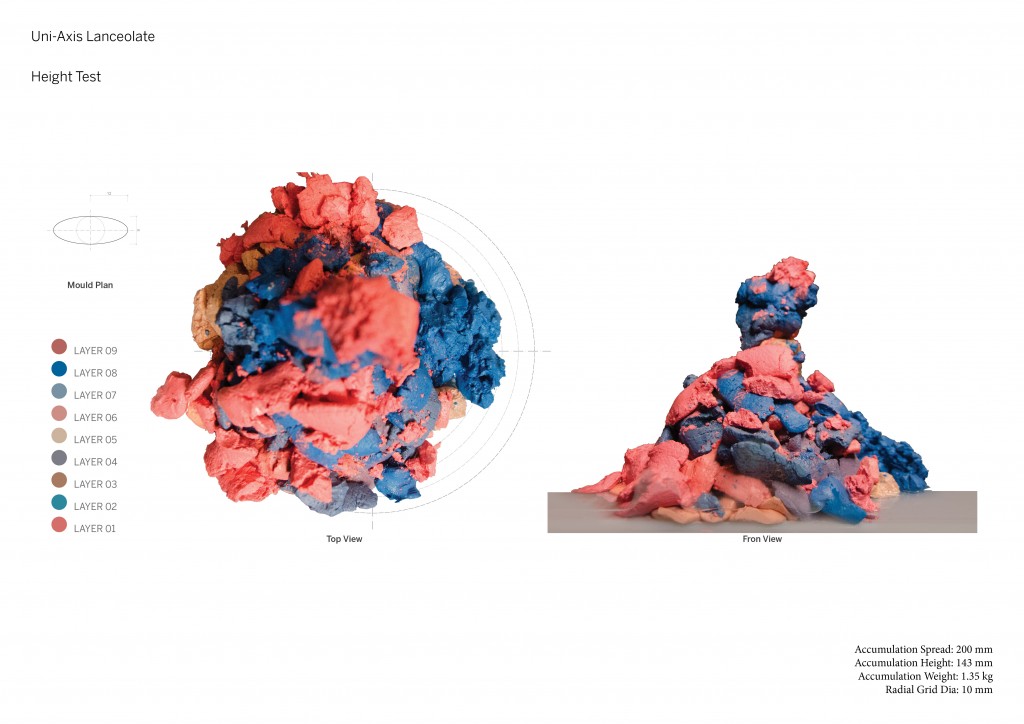
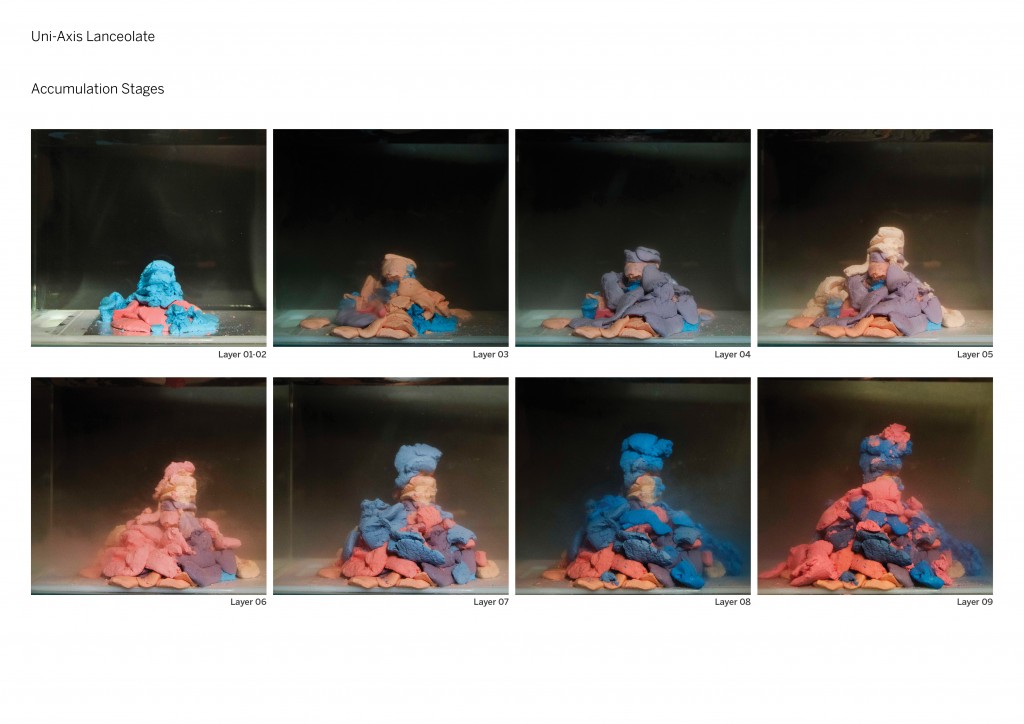
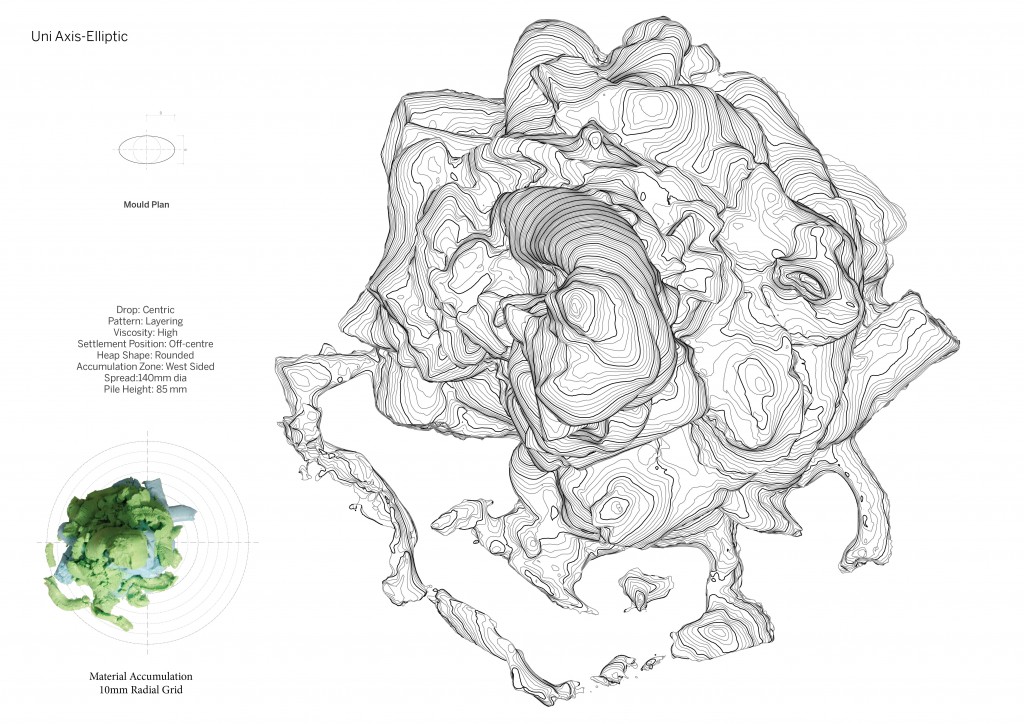
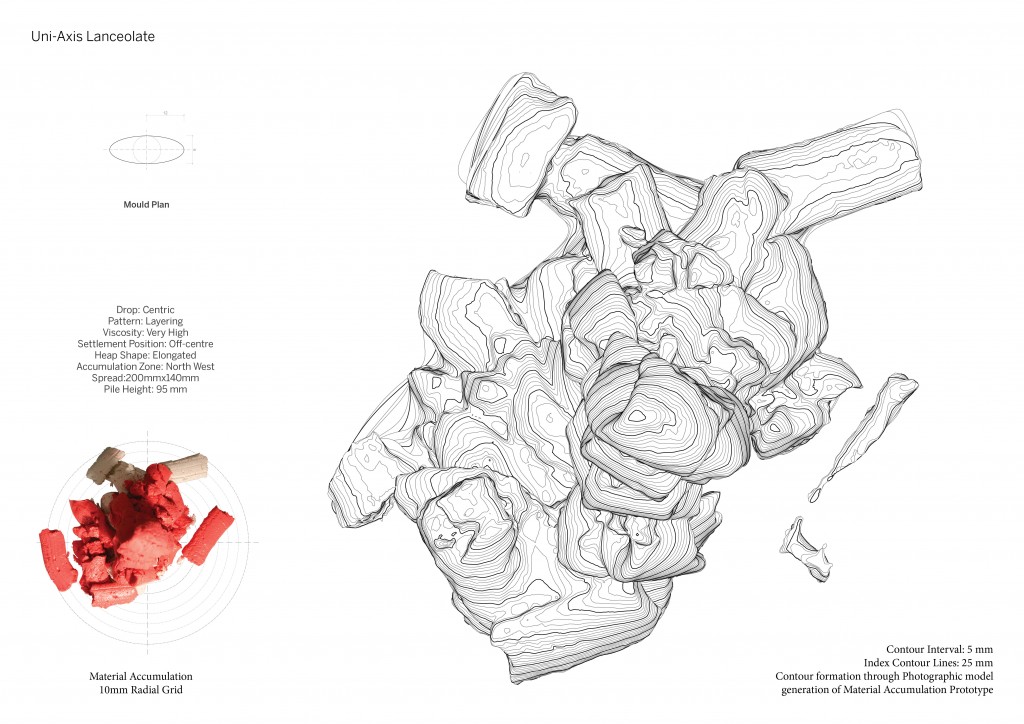

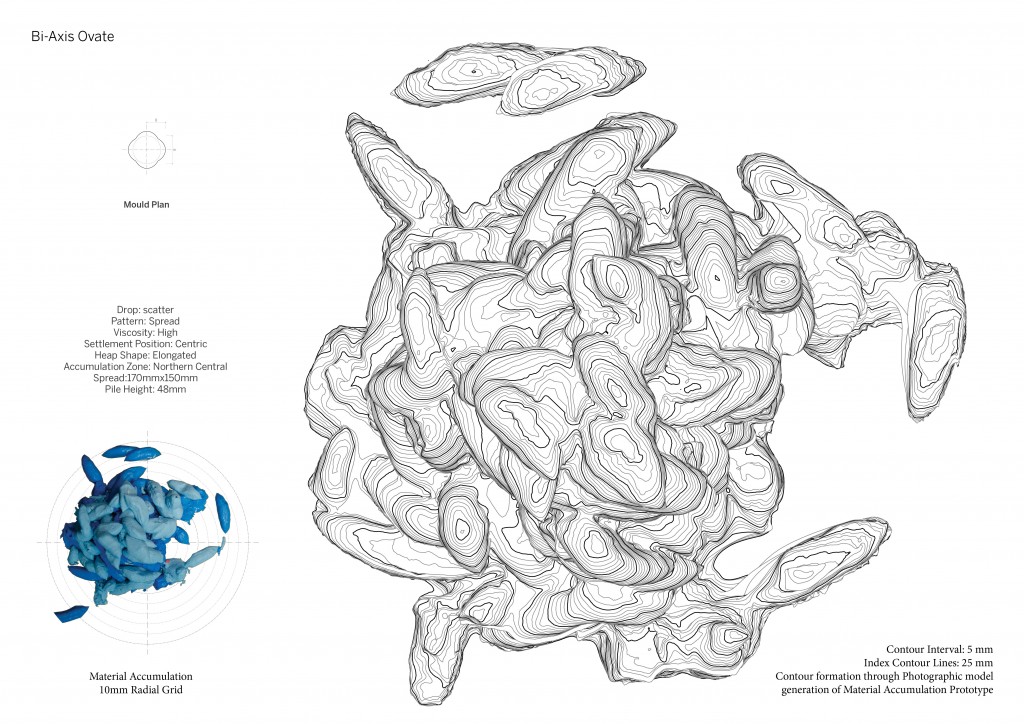
Fluid Dynamics – is ongoing thesis for Climatic Matter Studio for , Institute for Advanced Architecture of Catalonia, developed at Master in Advanced Architecture in 2017/2018 by:
Student: Mohammad Akram Khan
Tutors: Jordi Pagès and Lluis Viu